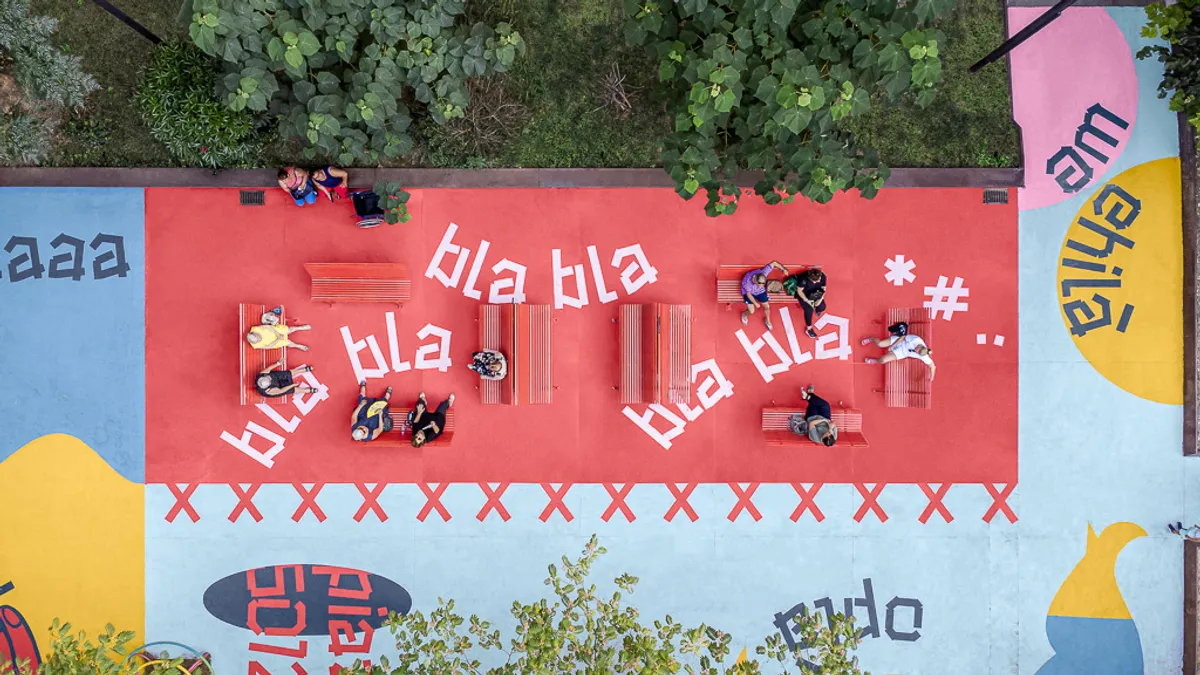Another year, another round of Asphalt Art Initiative grants from Bloomberg Philanthropies.
The organization announced on Nov. 14 the selection of 25 cities to receive up to $25,000 each and technical support for asphalt art projects that improve street safety, revitalize public spaces and engage residents.
The selected cities are scattered throughout the U.S., Mexico and Canada. The U.S. cities include Honolulu; New Orleans; Minneapolis; San Francisco; Portland, Oregon; Milwaukee, Wisconsin; Flagstaff, Arizona; Louisville, Kentucky; Stamford, Connecticut; Little Rock, Arkansas; and municipalities in South Carolina, Mississippi, Massachusetts, New Jersey and Maryland.
Asphalt art has tangible impacts, according to Bloomberg Philanthropies, which has run the grant program since 2020. In Cincinnati, Ohio, for example, the percentage of drivers who complied with stop signs jumped from 20% to 60% after the installation of intersection murals on a downtown street. A study released last year by Bloomberg Philanthropies found that crashes involving pedestrians or cyclists dropped by 50% across 22 U.S. project sites.
Last year, 19 European cities received grants from the organization to realize their asphalt art visions. Here’s a look at what some of them implemented with the funds:
Brno, Czech Republic
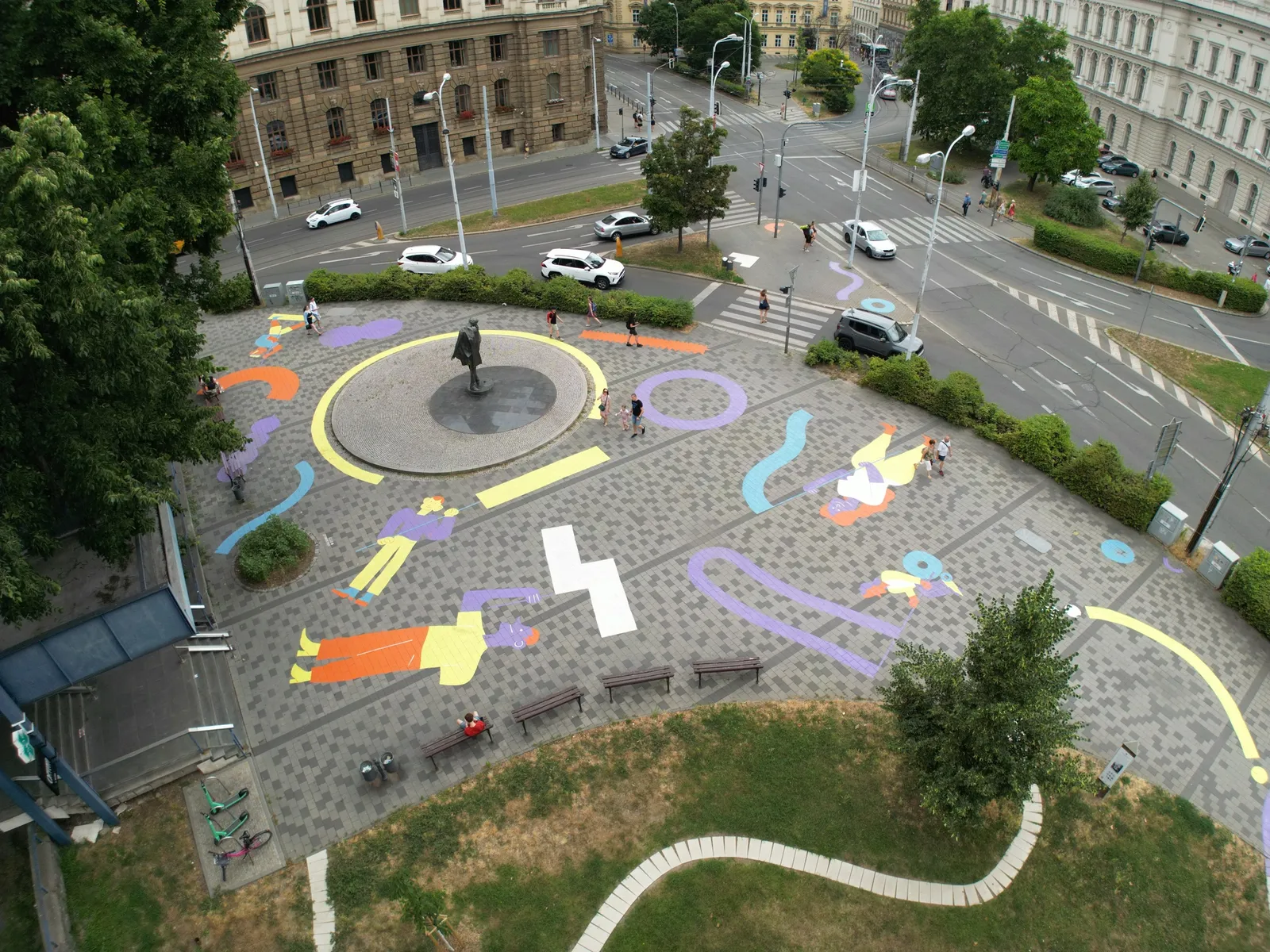
According to Bloomberg Philanthropies, the city chose to install this project at a site that has recently become a contentious topic in the community: the former administrative building of the Municipal Committee of the Communist Party. Some officials think the building should be demolished, but the area has also been deemed a good public space for cultural events and other development opportunities.
This $33,000 project aims to draw in and engage the public, allowing children to write temporary chalk messages in the bubbles held by the characters. According to Bloomberg Philanthropies, 94% of survey respondents say the project has positively affected their perception of the site.
Ferizaj, Kosovo
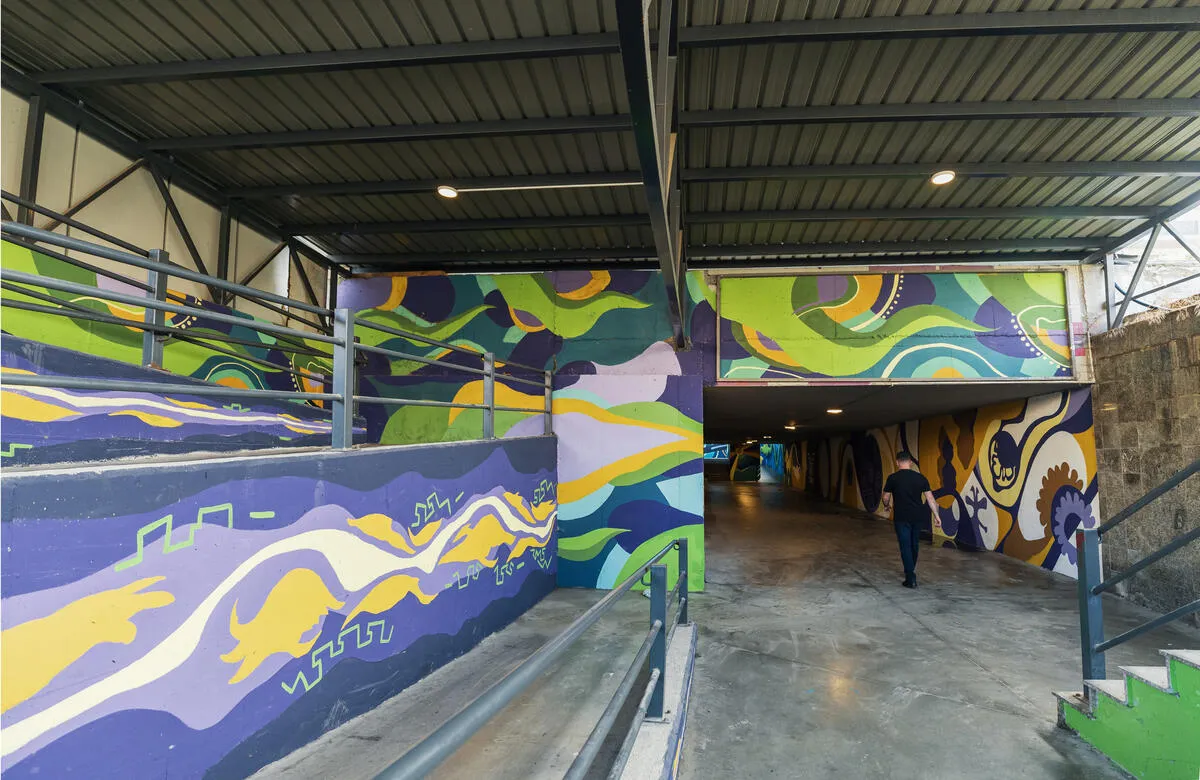
This growing city used asphalt art to encourage pedestrians to use recently built underpasses meant to allow for safe crossing of major roads and rail lines. Previously, the underpasses were poorly lit and unwelcoming, according to Bloomberg Philanthropies.
The $27,000 project resulted in an underpass seeing 23% more pedestrian visits, and the average visit lasted twice as long. The percentage of pedestrians who felt safe using the underpass increased from 37% to 84%.
Florence, Italy
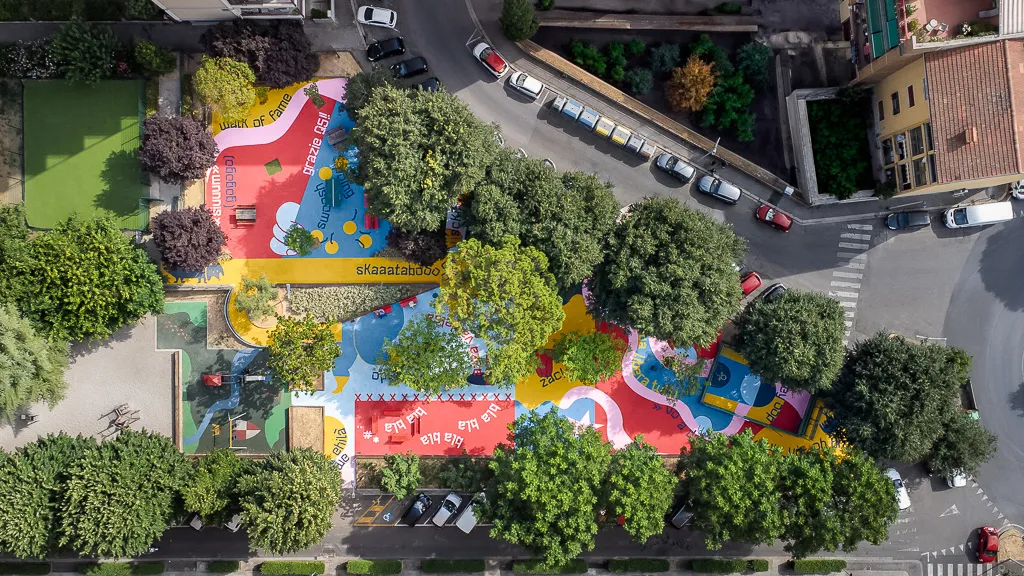
With this project at Piazza Valdelsa, Florence sought to increase neighborhood residents’ sense of belonging and counter unsafe feelings at certain times of the day. The colorful design features onomatopoeic sounds, alliterations and community slang. The rearrangement of seats created new conversation areas, and the basketball court doubles as a space to play soccer, with a new space also created for free play. This project cost $28,500.
Helsinki
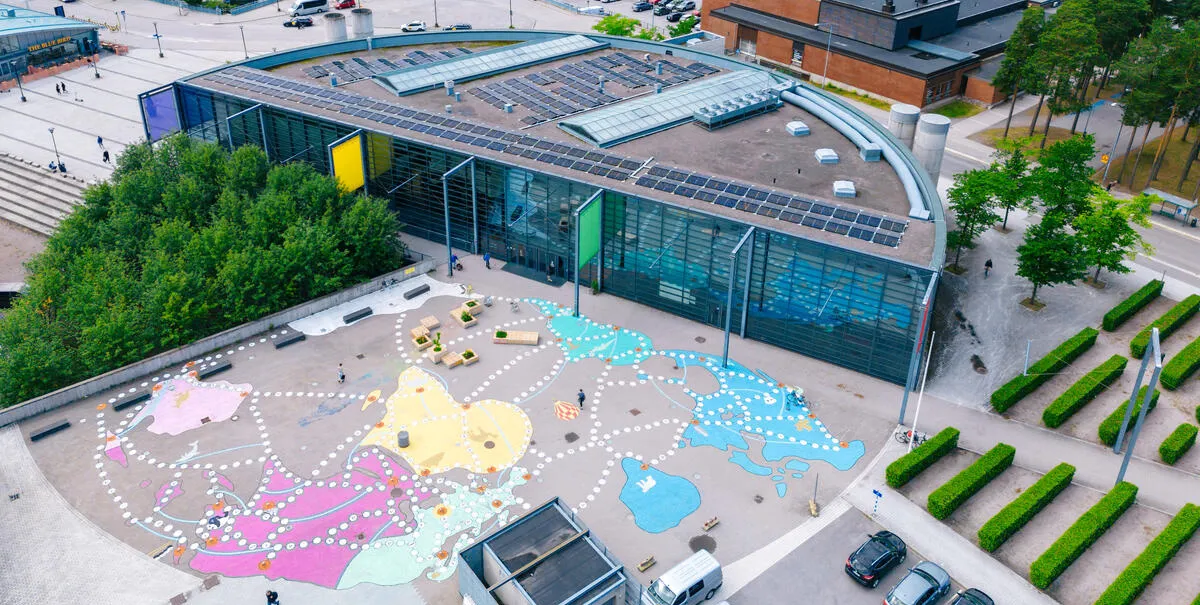
Helsinki’s project transformed a large plaza into a giant world map where people can act as game pieces traveling across continents. Posted are three options for game rules depending on the type and length of game desired, and the cultural center next door lends out giant dice for the game.
The percentage of residents with a positive opinion of the plaza increased from 27% to 78%, according to Bloomberg Philanthropies. The project cost roughly $25,000.
Varna, Bulgaria
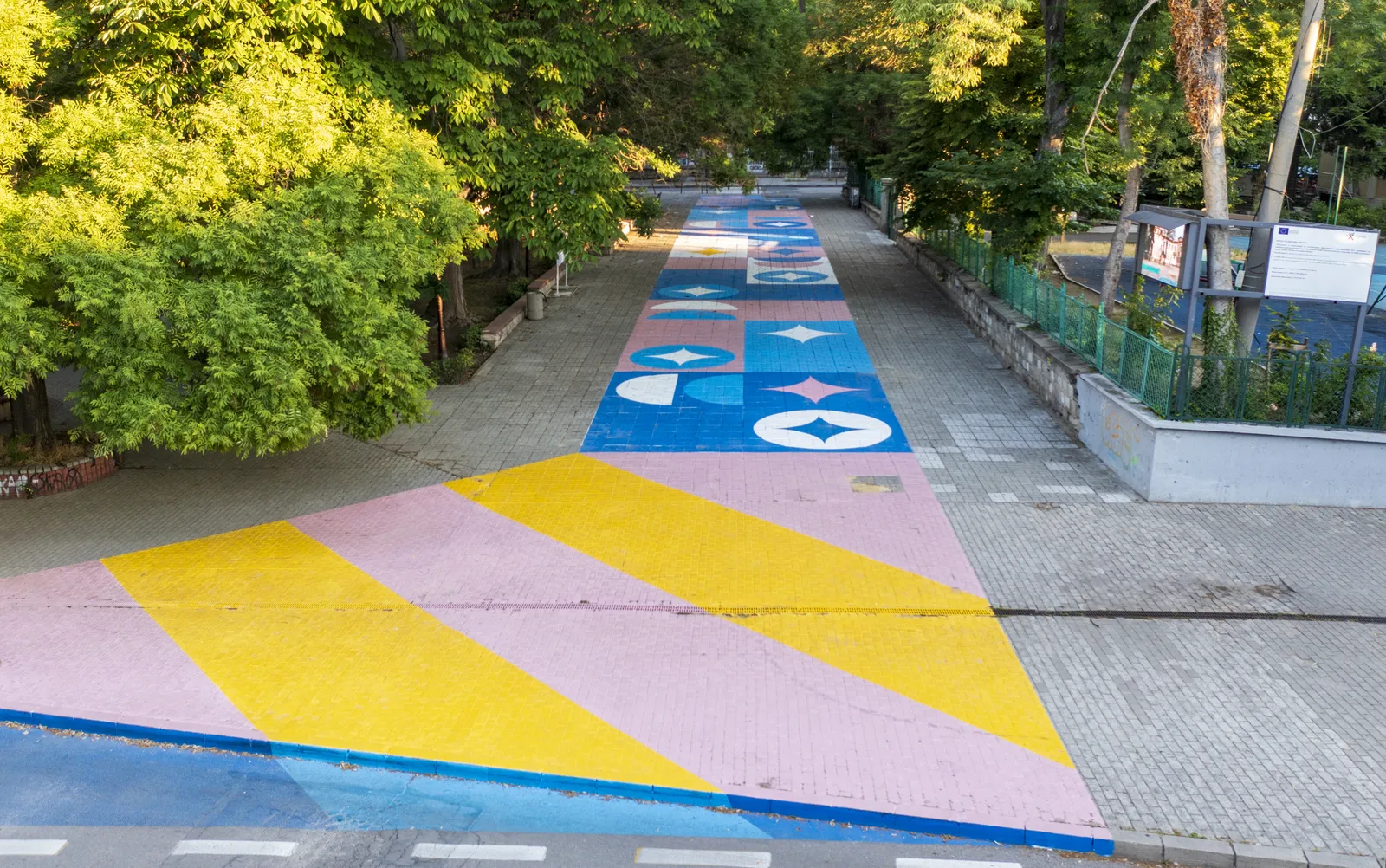
Varna’s grant supported the creation of more than 10,700 square feet, or 1,000 square meters, of murals, which took four days and 528 gallons (2,000 liters) of paint, according to a LinkedIn post by Kalkan Graffiti Agency, a partner on the project.
Tirana, Albania
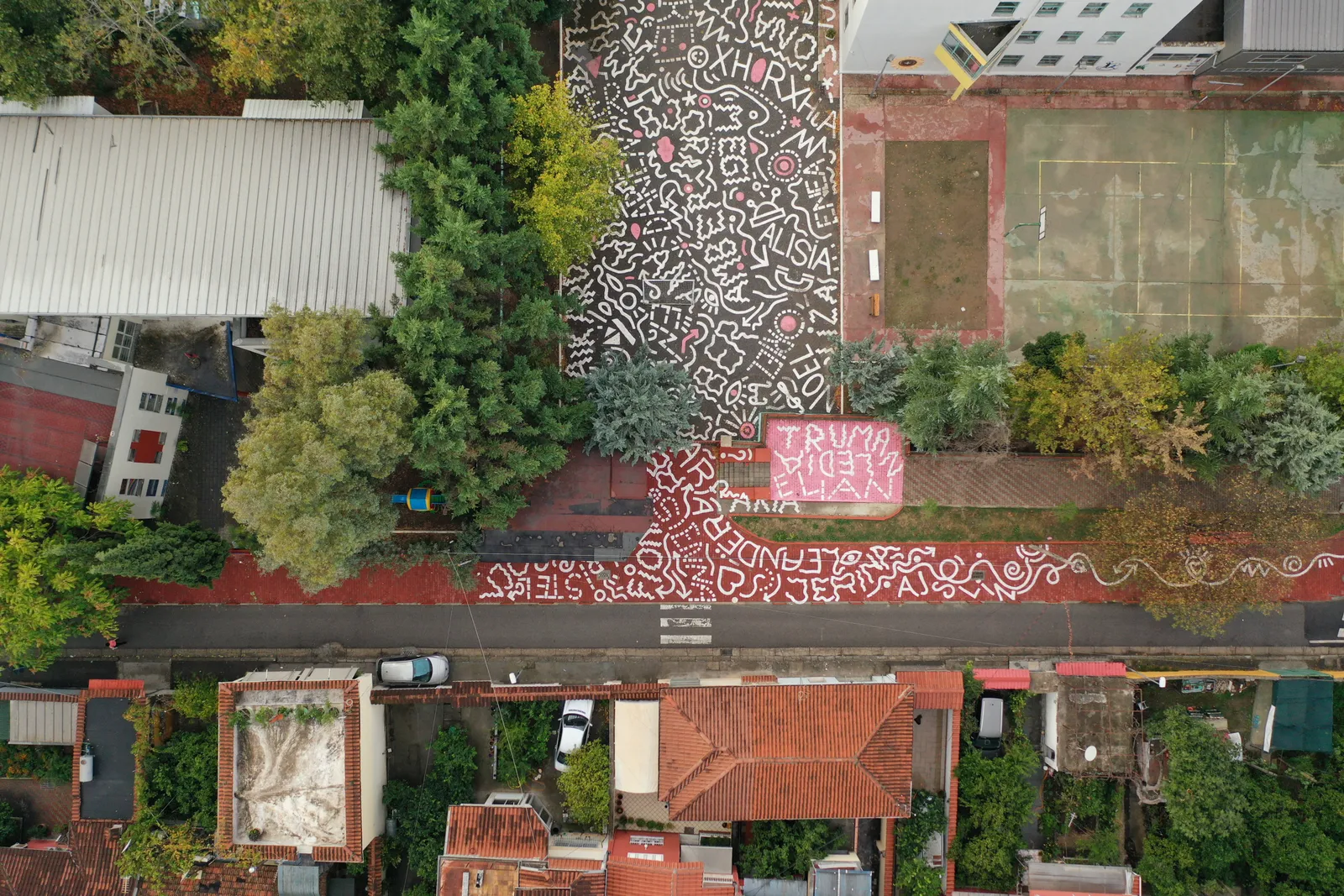
Albania’s capital city pursued this project in an effort to enhance pedestrian safety.
Zagreb, Croatia
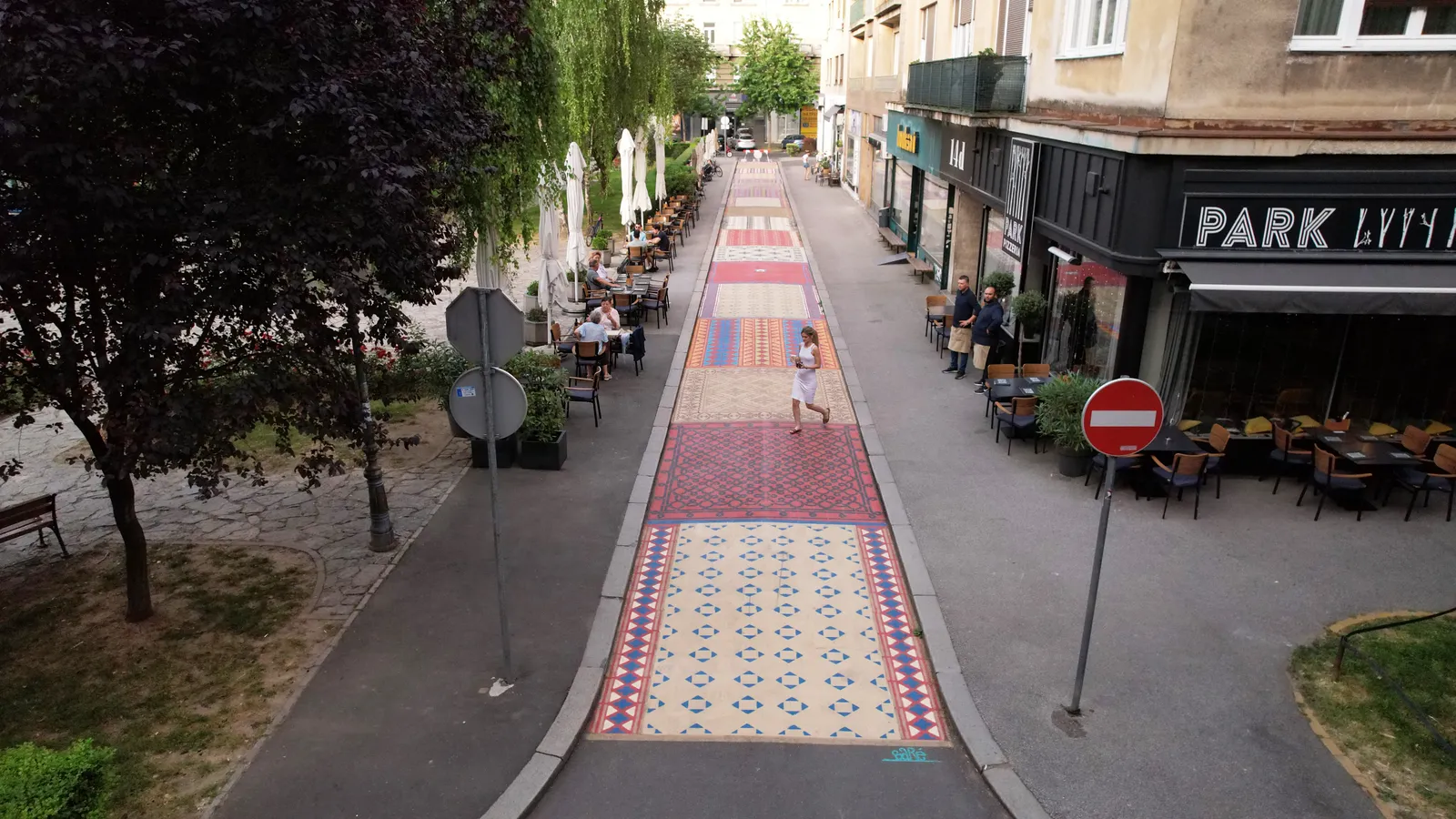
In Croatia’s capital city, the asphalt art project sought to make streets safer for pedestrians.



